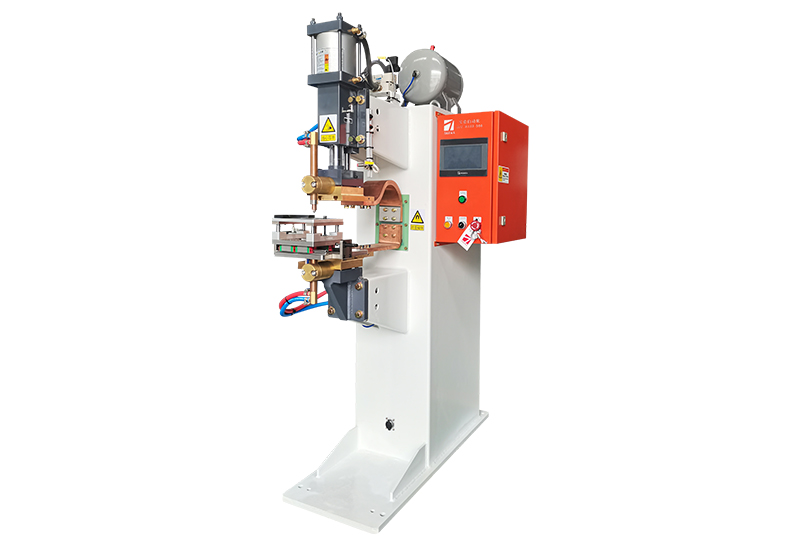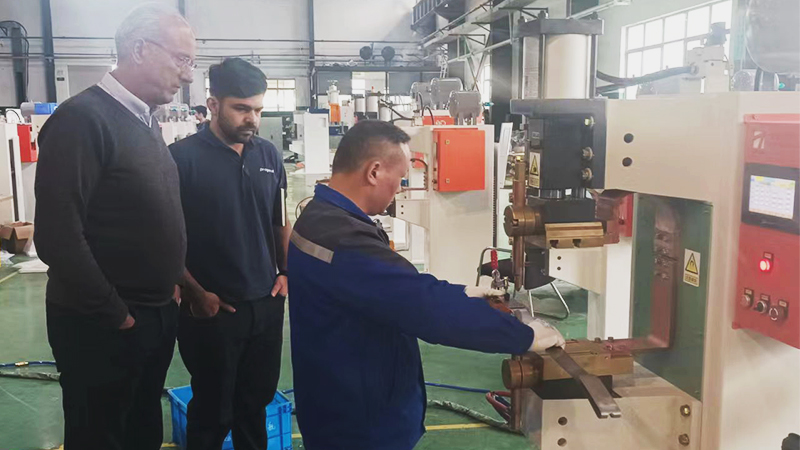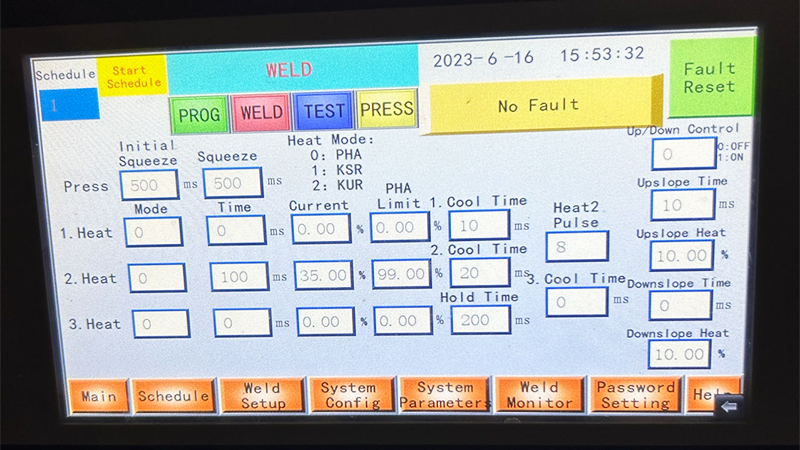Spot Welding-Tips for Good Welds
Spot welding is a kind of resistance welding, as is a well-established process used to join various metals, making it an essential method in modern industrial metalworking. This article provides some tips for achieving strong, attractive, and stable resistance welds:
Choose the Right Spot Welding Machine
Selecting the right resistance spot welding device is crucial. Avoid machines that are too large with too many features, as this can waste investment. Similarly, don’t choose a machine that is just adequate, as it may not allow for future expansion or have good fatigue resistance.
The best choice is a machine capable of hard specification welding, with about 25% additional capacity in welding current and pressure beyond the current sheet metal welding.
Using an oversized machine can cause as many issues as a machine that is too small. For instance, if the cylinder diameter is too large, it must operate at an air pressure below 0.2 MPa to achieve the required welding pressure. This can result in poor response from the pressure application mechanism. If the cylinder does not act quickly when the metal reaches a plastic state and needs rapid forging, the weld strength and stability can suffer.
Many companies, for ease of equipment management and uniform welding parameters, select equipment based on standard models rather than welding process requirements. This can lead to poor compatibility when welding the largest and smallest parts. This is a common mistake by inexperienced engineers. The correct approach is to match equipment size to the workpieces being welded.
Get Trained in Spot Welding
First, it’s crucial to undergo training in welding principles and techniques. Understanding the principles of resistance spot welding is essential for correctly adjusting welding processes and using the equipment properly.
Spot welding might seem straightforward, as it appears anyone can operate and adjust the spot welding machine: place the parts between the electrodes, press the start button, and the parts are welded together. However, this is deceptive. It’s essential to understand the importance of welding elements and parameters and adjust each to its optimal value.
Think of it like cooking: the same ingredients, but different seasonings, heat levels, and cooking times can produce vastly different flavors!
The three key elements of spot welding are welding current, welding time, and welding pressure. Additional parameters include pre-pressure time, welding interval time, and post-welding hold time.
By combining these parameters, you can achieve hard, medium, or soft welding specifications, resulting in different welding effects, such as:
Hard specifications: Minimal part deformation, low heat impact, fast welding speed, but requires high-power, strong, and high-pressure equipment.
Soft specifications: Significant part deformation, deep weld indentation, discoloration, slower welding speed, but lower power and rigidity requirements for the equipment.
Medium specifications: Effects and equipment requirements fall between the two extremes above.
Professional books like “Welding Handbook” provide parameter recommendations, and Agera’s technical service engineers offer professional training and guidance to users.
Choose the Right Spot Welding Electrodes
Matching the electrode material to the part material is crucial for optimal welding results and energy efficiency.
For spot welding aluminum and galvanized sheets, use alumina-dispersed copper electrodes, which resist sticking.
For stainless steel and low-carbon steel sheets, use chromium zirconium copper electrodes, which offer high cost-effectiveness.
For copper , tungsten and molybdenum electrodes are needed to assist with welding due to their heat properties.
The design and fabrication of electrode shapes are also critical, as they determine the size and appearance of the weld nugget and its strength.
Set Welding Parameters
Welding parameters can be set based on experience or data from public sources. If no references are available, you can only find the best welding parameters through multiple trial welds with different settings. When testing, follow these principles:
Start Small: Begin with conservative, smaller values for parameters like welding current, time, and pressure, and gradually increase them. This approach helps avoid damage to the equipment, electrodes, and parts.
Adjust One Parameter at a Time: Adjusting multiple parameters simultaneously can lead to incorrect judgments, especially for inexperienced operators. If one adjustment doesn’t work, try another while carefully observing the changes in welding quality.
Allow for Parameter Margins: Ensure there is a margin for parameters to accommodate variations in the parts.
Once the best welding parameters are confirmed, solidify these data and use them as the basis for production.
Maintain Electrodes
Regularly reshape deformed electrodes to keep them at their originally designed size and clean off dirt and copper alloy residues from their surfaces. This maintenance is crucial for stable welding.
Electrodes working under high pressure and temperature can deform, increasing their contact area with the parts and reducing the welding current density. Additionally, surface coatings, oil, and rust from the parts can adhere to the electrodes, increasing contact resistance and limiting the welding current. These issues directly affect welding quality.
Using a specialized electrode dresser can quickly restore the electrode’s shape and remove surface dirt. Avoid using a file for manual cleaning, as it cannot ensure the proper shape and surface finish of the electrodes.
Use Welding Inspection Equipment
Spot welding joints usually don’t undergo non-destructive testing. Common inspection methods include visual inspection, torque wrenches (for welding nuts), tensile testing machines, and metallographic testers.
Tensile and Compression Testing: Conduct these tests before starting a full day of production to confirm the reliability of the welding parameters with a set of test data. At the end of each shift, test the parts welded with the current parameters again to ensure consistency. For critical parts with higher quality requirements, increase the frequency of destructive testing.
Process Monitoring: Using welding quality monitors is another option, which is becoming increasingly valued and widely used. By monitoring welding parameters in real-time and setting upper and lower limits, any deviations can trigger alarms, reducing welding defects. These welding data can also be stored for quality traceability.
Regular Maintenance and Inspection
After long-term use, Spot welding equipment needs regular checks in these areas:
- Conductive Circuit: Welding spatter can invade insulated parts and gaps, causing shunting, reducing and destabilizing the welding current. Remove weld slag. Frequent electrode changes can wear and oxidize conductive connections, requiring reprocessing. Tighten bolts on soft copper straps and hard copper bars to avoid loosening from prolonged use.
- Welding Cylinder Guide: Check for smooth movement and gaps. Poor sliding affects weld follow-through; excessive gaps affect weld shape and part alignment.
- Water Circuit: Ensure smooth water flow. Clean flow meters for clarity, check each flow path, and clear blockages or replace pipes. Insufficient cooling water can overheat transformers and electrodes, reducing lifespan or causing burnout. Check for and fix leaks.
- Welding Current: Verify the welding current with a third-party tester to ensure it meets standards. Prolonged use can diminish output current, so regular evaluations and upgrades or repairs may be needed.
- Air Circuit: Check and fix air leaks, as leaks cause unstable pressure and energy loss.
- Cleanliness: Keep the equipment clean. Clear markings and clean equipment reduce human errors.
Summer
These are some recommendations for users of resistance welding equipment. With over 20 years of welding industry experience, we offer a full range of services, including welding sample preparation, machine selection, custom non-standard automated welding equipment, installation and commissioning, maintenance, supporting equipment, and parts. Feel free to contact us!


